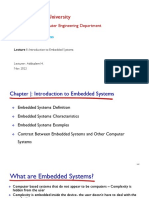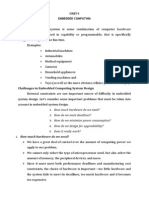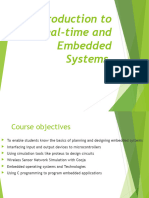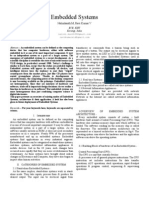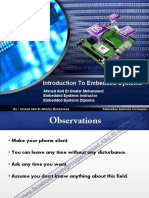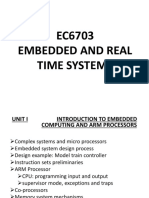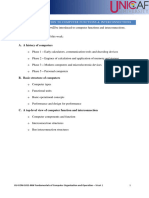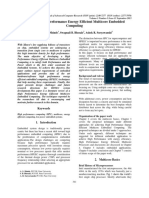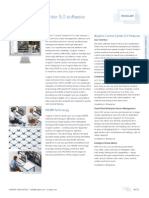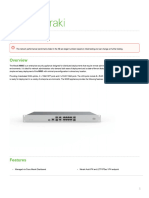0% found this document useful (0 votes)
44 views6 pagesWeek 6 - An Introduction To Embedded Systems 1
The document introduces embedded systems. It discusses what embedded systems are, including examples like smartphones, medical devices, and vehicles. It also covers the characteristics of embedded systems like being cyber-physical, operating in real-time, and having dedicated functions. The document concludes by discussing the requirements for embedded systems and different methods for designing and developing embedded systems, including bottom-up, top-down, and meet-in-the-middle approaches.
Uploaded by
Game AccountCopyright
© © All Rights Reserved
We take content rights seriously. If you suspect this is your content, claim it here.
Available Formats
Download as PDF, TXT or read online on Scribd
0% found this document useful (0 votes)
44 views6 pagesWeek 6 - An Introduction To Embedded Systems 1
The document introduces embedded systems. It discusses what embedded systems are, including examples like smartphones, medical devices, and vehicles. It also covers the characteristics of embedded systems like being cyber-physical, operating in real-time, and having dedicated functions. The document concludes by discussing the requirements for embedded systems and different methods for designing and developing embedded systems, including bottom-up, top-down, and meet-in-the-middle approaches.
Uploaded by
Game AccountCopyright
© © All Rights Reserved
We take content rights seriously. If you suspect this is your content, claim it here.
Available Formats
Download as PDF, TXT or read online on Scribd
/ 6



